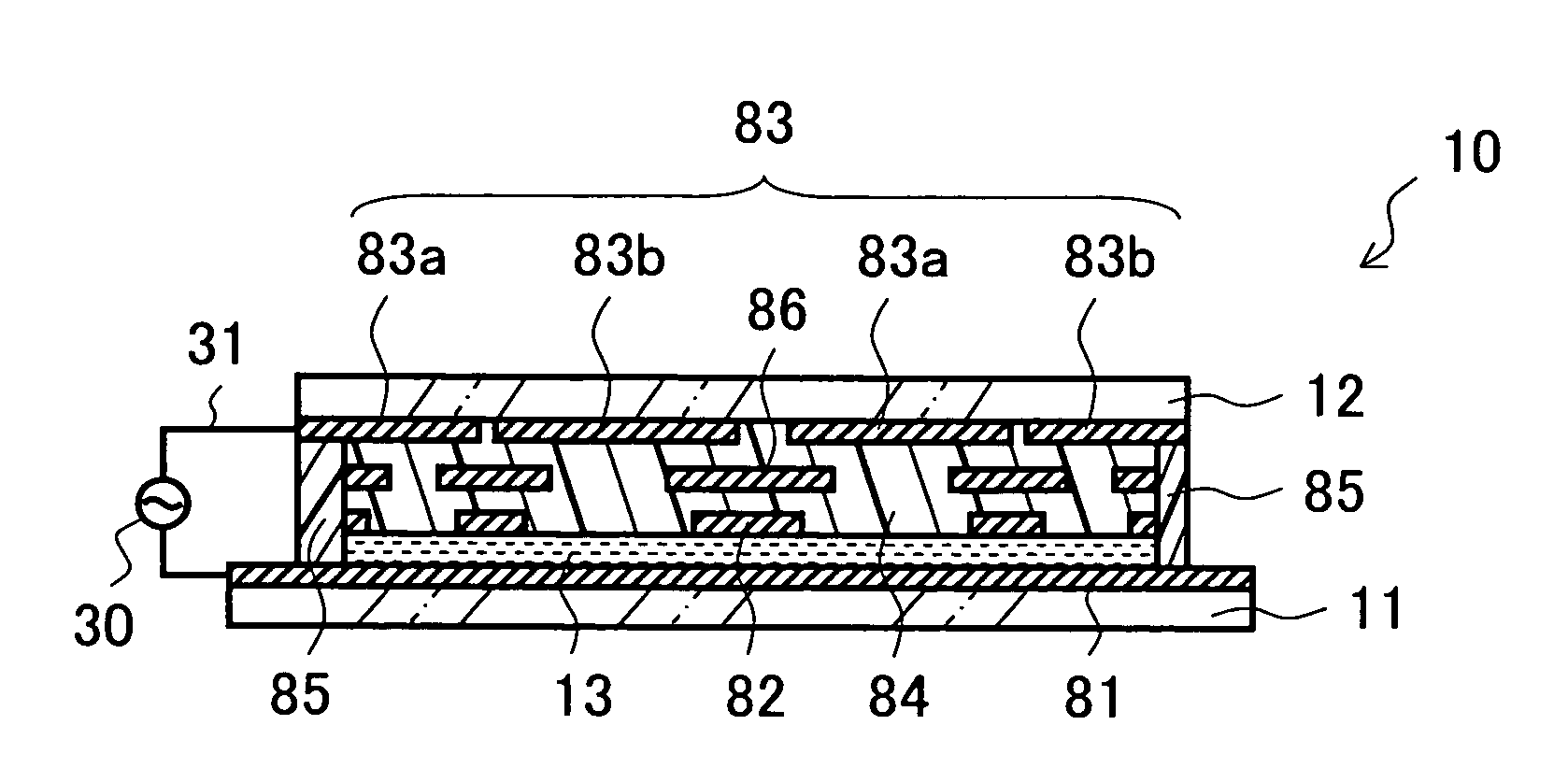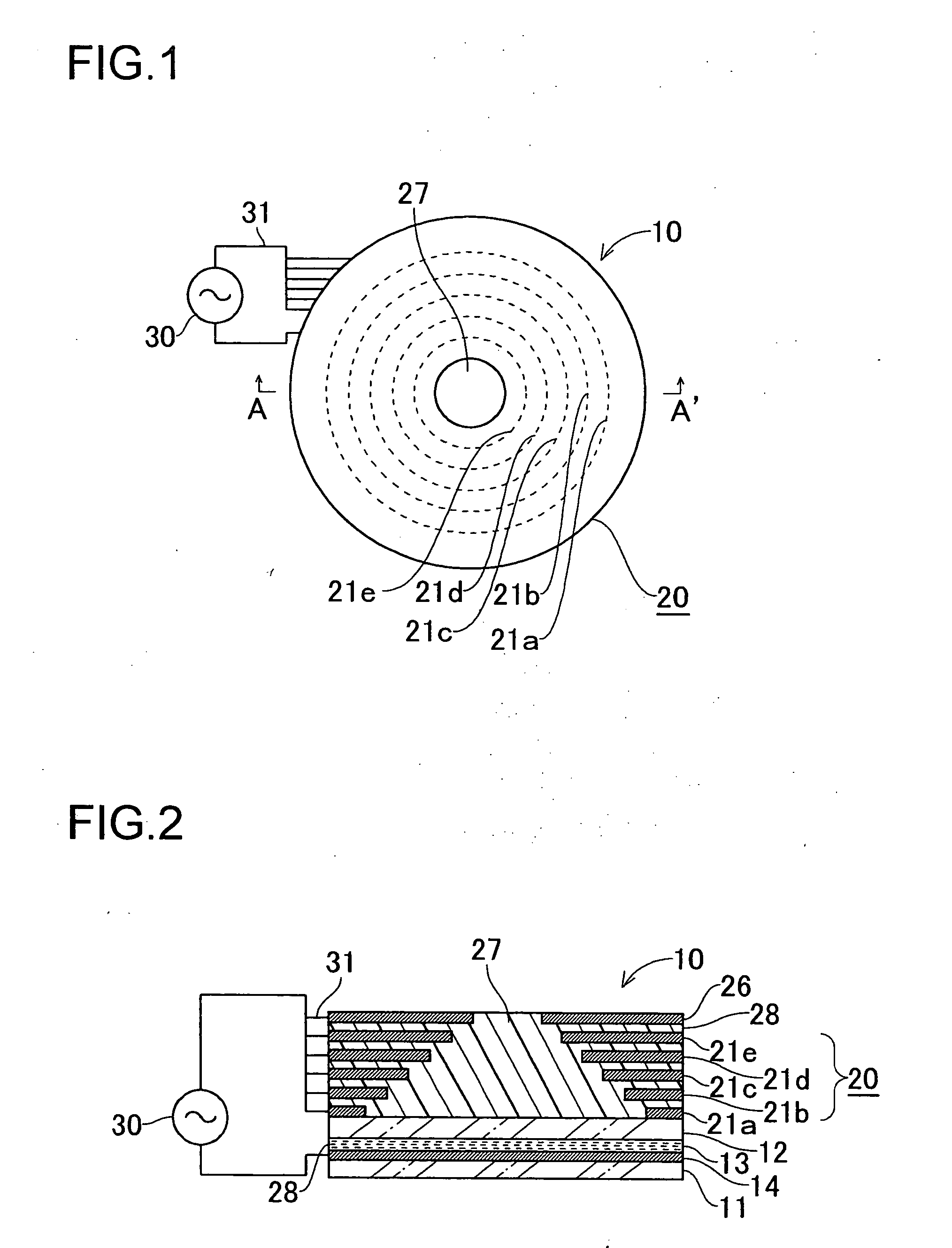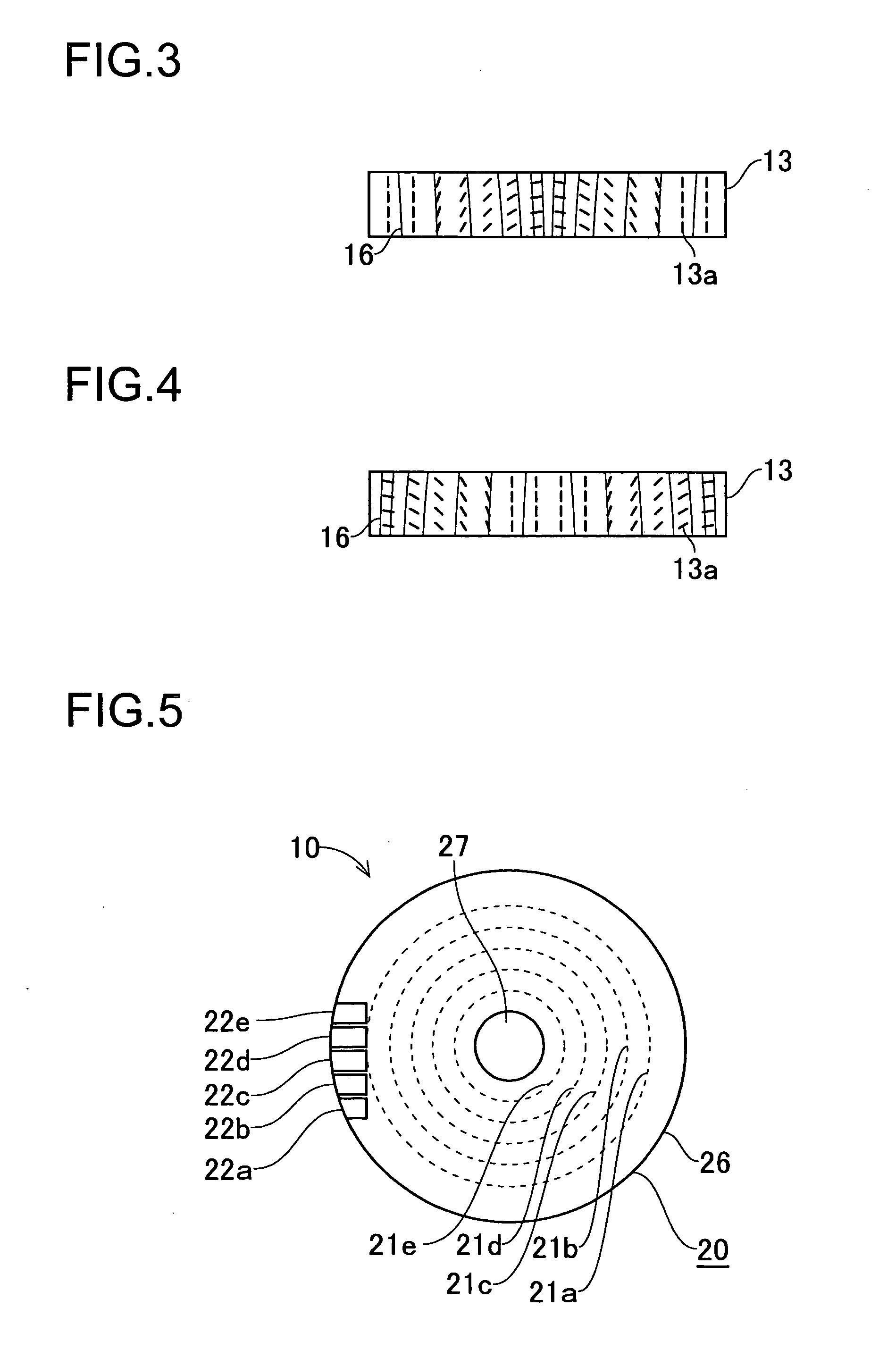Optical element and optical pickup
a technology of optical elements and pickups, applied in the field of optical elements, can solve the problems of degrading the characteristics of these optical elements and degrading the optical characteristics, and achieve the effects of avoiding the influence of conductors, avoiding degradation of optical elements' characteristics, and correcting various kinds of aberration
- Summary
- Abstract
- Description
- Claims
- Application Information
AI Technical Summary
Benefits of technology
Problems solved by technology
Method used
Image
Examples
first embodiment
[0075] A first embodiment of the present invention will be described below with reference to the relevant drawings. FIG. 1 is a plan view of the optical element of the first embodiment, and FIG. 2 is a cross-sectional view thereof alone line A-A′ shown in FIG. 1 as viewed in the arrow-indicated direction.
[0076] First, the structure of the optical element 10 will be described. As shown in FIGS. 1 and 2, in the optical element 10, a first transparent substrate 11 and a second transparent substrate 12 that have equal exterior diameters and are circular in shape are arranged to face each other at a distance from each other, with a liquid crystal layer 13 sealed in between. Over the entire surface of the first transparent substrate 11 facing toward the liquid crystal layer 13, a first electrode 14 that is transparent is laid.
[0077] On the surface of the second transparent substrate 12 facing away from the liquid crystal layer 13, a second electrode 20 is laid. The second electrode 20 i...
second embodiment
[0101] A second embodiment of the present invention will be described below with reference to the relevant drawings. FIG. 11 is a cross-sectional view of the optical element of the second embodiment. The second embodiment differs from the first embodiment in that, instead of the first electrode, a fourth electrode and a fifth electrode are provided; in other respects, the second embodiment is the same as the first embodiment, and therefore, in FIG. 11, such parts that find substantially equivalent parts in the first embodiment are identified by common reference numerals.
[0102] In the optical element 10 of the second embodiment, as shown in FIG. 11, on the surface of the first transparent substrate 11 facing away from the liquid crystal layer 13, a fourth electrode 41 and a fifth electrode 42 are laid that have the same structures as the second electrode 20 and the third electrode 26, respectively. It should be noted that what is referred to as a first, a second, a third, and a four...
third embodiment
[0105] A third embodiment of the present invention will be described below with reference to the relevant drawings. Such parts as find their counterparts in the first or second embodiment will be identified by common reference numerals, and no explanation thereof will be repeated.
[0106] First, a description will be given of the construction of an optical pickup to which the optical element 10 of each embodiment is applicable.
[0107]FIG. 12 is a diagram illustrating an outline of the construction of the optical pickup dealt with in this embodiment. This optical pickup is provided with: light sources 61, 62, and 63; beam splitters 64, 65, and 66; a collimator lens 67; an adjustment lens 68; a collimator lens 69; a half-mirror 70, a quarter-wave plate 71, a condenser lens (objective lens) 72; and photosensors 73 and 74. In this optical pickup, the optical element 10 is arranged in the optical path between the half-mirror 70 and the quarter-wave plate 71. The optical element 10 is desi...
PUM
| Property | Measurement | Unit |
|---|---|---|
| wavelength | aaaaa | aaaaa |
| wavelength | aaaaa | aaaaa |
| wavelength | aaaaa | aaaaa |
Abstract
Description
Claims
Application Information
 Login to View More
Login to View More - R&D
- Intellectual Property
- Life Sciences
- Materials
- Tech Scout
- Unparalleled Data Quality
- Higher Quality Content
- 60% Fewer Hallucinations
Browse by: Latest US Patents, China's latest patents, Technical Efficacy Thesaurus, Application Domain, Technology Topic, Popular Technical Reports.
© 2025 PatSnap. All rights reserved.Legal|Privacy policy|Modern Slavery Act Transparency Statement|Sitemap|About US| Contact US: help@patsnap.com



